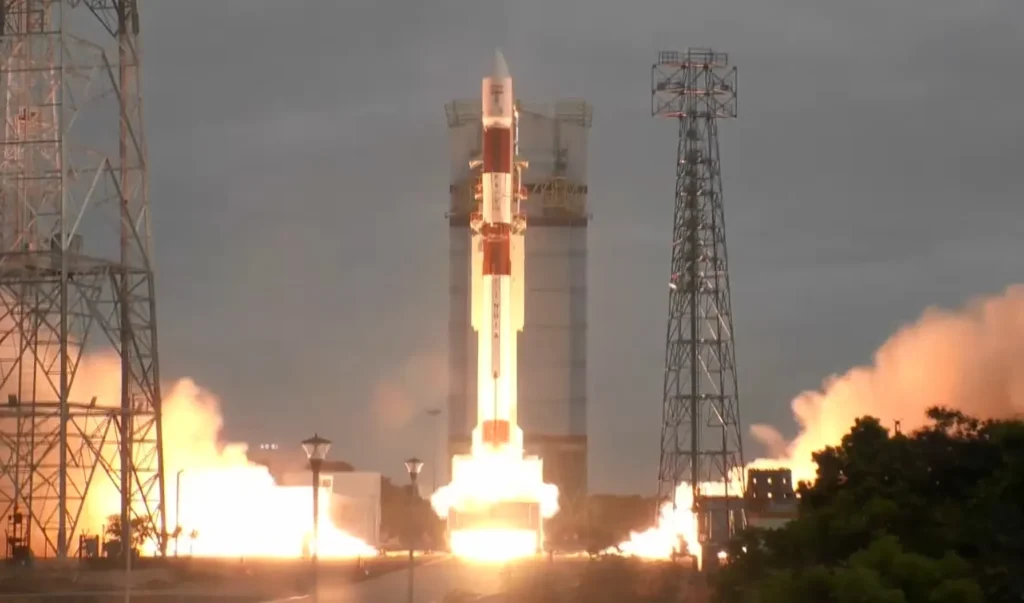We can only marvel at the scientific inventions we have been able to achieve in the last couple of years! ISRO has left no stone unturned in putting India on the global pedestal when it comes to launching rockets in space successfully! A PSLV or Polar Satellite Launch Vehicle is a third-generation rocket that has been launched, manufactured, and operated by ISRO (Indian Space Research Organization). This vehicle can place 1600 kg remote sensing satellites into SSO, also known as sun-synchronous orbit. It also has the capacity to place 1050kg small-sized spacecraft into GTO, also known as Geostationary Transfer Orbit.
PSLV History
The first launch of PSLV dates way back to 20 September 1993. There are three stages of the launching journey. The first and the second stages performed as expected. However, due to the altitude control problem, it led to the collision of the second and third stages at their separation. Since its commencement, PSLV launched a total of 62 satellites out of which 27 were Indian and 35 were foreign satellites. Following are the names of the satellites of PSLV-
- Resourcesat-2.
- Youthsat.
- X-sat.
- Cartosat-2B.
- Alsat-2A.
- Oceansat-2.
- Studsat.
Nanosatellites
- Anusat.
- Cartosat-2A.
- IMS-1.
- DLR-Tubsat.
- KALPANA-1.
- Space capsule recovery Experiment.
What are the variations associated with PSLV?
Indian Space Research Organization built several variants of PSLV based on several parameters such as their payload capacities. They built five variants of PSLV which varied from 600 kg in LEO (Low Earth Orbit) to 1900 kg in a sun-synchronous orbit. PSLV has undergone several developments and improvements with each preceding version. The three main parameters involved are efficiency, weight and thrust. PSLV also launched the ‘Mars Orbiter Mission’ which is India’s first interplanetary probe in November 2013.
One of the most astounding facts about ISRO is that it was successful in its endeavour of launching 1678 kg of payload to 622 km into SSO. It has its three variants such as PSLV 1, PSLV 2 and PSLV 3.
PSLV- CA
PSLV has different versions, one of which is PSLV- core alone or PSLV-CA, which is a much-advanced version of PSLV. This variant carries 400kg less propellant than the primary standard model. Moreover, it can also launch 1100 kg of payload to SSO. The first flight of this advanced variant took place on 23 April 2007.
PSLV-XL
PSLV-XL is known as the full configuration PSLV, and it is fitted with six strap-on motors. This configuration was first used for launching Chandrayaan-1 in October 2008. It weighed 320,000 kg at take-off and could carry 4000 kg of fuel compared to its primary version.
PSLV-HP
This highly anticipated version of PSLV is currently under development. There have been various speculations of this excellent engineering marvel. It will feature multiple upgrades on the strap-on boosters and have an astonishing payload capacity of up to 2000 kg! HP stands for high performance and will live up to its name! The variant will be designed in such a way that it will launch small satellites into LEO in three stages.
Design of PSLV Launch Vehicle
PSLV has been fitted with an inertial guidance system to accomplish guidance, navigation, and attitude control missions. It was designed to be 450m high and 2.8m in diameter. The pitch control of the vehicle is the one that constantly adjusts the angle of attack of the rotor blades. The angle of the pitch should be changed in a way that achieves the most excellent possible energy yield. Yaw control refers to the rotation of the wind turbine on the horizontal axis. This ensures that the turbine is facing the force of the wind to maximise the effective rotor area. PSLV is strategically incorporated with two cylindrical aluminium tanks. These tanks are attached to the solid rocket boosters and store the injected fuel. The engineers also installed RCT or Roll Control Thrusters for efficient roll control during the initial stage.
PSLV development
After the idea of PSLV was conceived, it came to fruition at the Vikram Sarabhai Space Centre in Kerala in the early 1990s. Even though the maiden flight of PSLV took place in 1993, owing to an altitude control error, the endeavour was unsuccessful. However, the failure was compensated by the massive win of the first successful launch of PSLV into SSO in October 1994. This launch was carried out from the SHAR launch centre in SrihariKota.
PSLV Contractors
ISRO Inertial system unit supplied the inertial systems for the PSLV. LPS, the Liquid Propulsion system, and the RCS, or the Reaction control system, were built by LPSC.
Launch stages of PSLV
ISRO has laid out a strategic plan to launch the PSLV Satellite into orbit in four stages. The first two stages are incorporated with two solid propulsion systems, and liquid engines power the latter.
Red This Also: Google Gemini Ai Revolution








